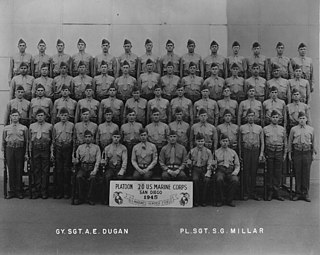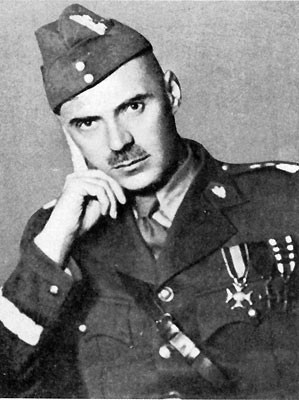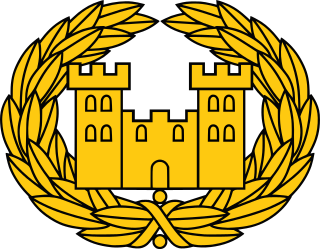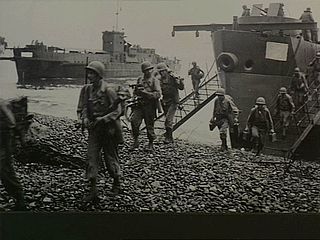Finnish Infantry Division Generic Organisation
Finnish Infantry Division Generic Organisation

A battalion is a military unit, typically consisting of up to one thousand soldiers commanded by a lieutenant colonel and subdivided into a number of companies, each typically commanded by a major or a captain. The typical battalion is built from three operational companies, one weapons company and one headquarters company. In some countries, battalions are exclusively infantry, while in others battalions are unit-level organisations.
A company is a military unit, typically consisting of 100–250 soldiers and usually commanded by a major or a captain. Most companies are formed of three to seven platoons, although the exact number may vary by country, unit type, and structure.

A platoon is a military unit typically composed of two to four squads, sections, or patrols. Platoon organization varies depending on the country and the branch, but a platoon can be composed of 20–50 troops, although specific platoons may range from 10 to 100 people. A platoon is typically the smallest military unit led by a commissioned officer. The platoon leader is usually a junior officer—a second or first lieutenant or an equivalent rank. The officer is usually assisted by a platoon sergeant.

The National Revolutionary Army, sometimes shortened to Revolutionary Army (革命軍) before 1928, and as National Army (國軍) after 1928, was the military arm of the Kuomintang from 1925 until 1947 in China. It also became the regular army of the Republican era during the KMT's period of party rule beginning in 1928. It was renamed the Republic of China Armed Forces after the 1947 Constitution, which instituted civilian control of the military.

The Polish II Corps, 1943–1947, was a major tactical and operational unit of the Polish Armed Forces in the West during World War II. It was commanded by Lieutenant General Władysław Anders and fought with distinction in the Italian Campaign, in particular at the Battle of Monte Cassino. By the end of 1945, the corps had grown to well over 100,000 soldiers.
This is a list of British ground forces in the Falklands War. For a list of ground forces from Argentina, see Argentine ground forces in the Falklands War

Kainuu brigade is a Finnish Army unit situated in Kajaani. The brigade is one of the biggest army units, training approximately 4000 conscripts annually. The Kainuu Brigade is one of the three readiness brigades in the Finnish Army. The brigade trains troops for war-time Kainuu Jäger Brigade.
This article covers the Japanese garrisons on the by-passed Pacific islands from 1944 to 1945, including the Japanese mandated territory of the South Seas Mandate.
A Marine expeditionary brigade (MEB) is a formation of the United States Marine Corps, a Marine air-ground task force of approximately 14,500 Marines and sailors constructed around a reinforced infantry regiment, a composite Marine aircraft group, a combat logistics regiment and a MEB command group. The MEB, commanded by a general officer (usually a brigadier general), is task-organized to meet the requirements of a specific situation. It can function as part of a joint task force, as the lead echelon of the Marine expeditionary force (MEF), or alone. It varies in size and composition, and is larger than a Marine expeditionary unit (MEU) but smaller than a MEF. The MEB is capable of conducting missions across the full range of military operations.

The 81st Division was formed under British control during the Second World War. It took part in the Burma Campaign.

The 82nd Division was formed under British control during the Second World War. It took part in the later stages of the Burma Campaign and was disbanded in Burma between May and September 1946.

The 46th Infantry Division was a formation of the Michigan Army National Guard active between 1947 and 1968. It was initially headquartered at Lansing. Many of its units had previously been part of the 32nd Infantry Division. It was converted to the Reorganization Objective Army Division (ROAD) structure in March 1963. The Division's 2nd Brigade was assigned to the Selected Reserve Force, a higher-readiness component of the ARNG, in 1965. Virtually the entire division was involved in responding to the 12th Street riot in Detroit in July–August 1967.

The Ukrainian Marine Corps, also known simply as the Ukrainian Marines, is the maritime land force service branch of the Armed Forces of Ukraine since 2023, responsible for conducting expeditionary and amphibious operations. From its modern foundation in 1993 up to 2023 it constituted part of the Coastal Forces of the Ukrainian Navy. It is used as a component part of amphibious, airborne and amphibious-airborne operations, alone or in coordination with formations and units of the Ground Forces in order to capture parts of the seashore, islands, ports, fleet bases, coast airfields and other coast objects from the enemy. It can also be used to defend naval bases, vital shoreline areas, separate islands and coast objects, and security of hostile areas.

The Land Forces of the National People's Army was the ground-based military branch of the German Democratic Republic (GDR) National People's Army (NPA). The Land Forces Command, located at Geltow, was established on 1 December 1972 as a management body created for the land forces. The NPA itself was created on March 1, 1956, from the Kasernierte Volkspolizei.
The Polish Infantry Regiment; during World War 2 comprised on average some 2,900 men and 60 officers organised around 3 rifle battalions armed with either the Karabinek wz.29 or the Wz. 98, 7.92mm bolt-action rifles. Each 19-man squad was also issued the RKM wz.28 light machine gun. Other regimental weapons included the Polish version of the French Model 1897 75-mm field gun, the Wz. 35 anti-tank rifle, the Ckm wz.30 heavy machine gun, the wz.31 81 mm mortar, and the wz.36 46mm light mortar/grenade launcher.
This is the order of battle for the Battle of Timor (1942–43) which occurred on the island of Timor, in the Pacific theatre of World War II. It involved forces from the Empire of Japan—which invaded on February 20, 1942—on one side and Allied personnel, predominantly from Australia and the Netherlands, on the other. Many Timorese civilians and some Portuguese colonists fought with the Allies as criados (guerrillas), or provided food, shelter and other assistance.

This is the order of battle of Allied and Japanese forces during the Landing at Saidor in 1944.
The Order of battle, Keren 1941 shows Italian army forces that participated in the Battle of Keren from February to March 1941 and British troops in Sudan on 20 January 1941, which participated in military operations against Eritrea during the East African Campaign 1940–1941.
The following is a hierarchical outline of the Czechoslovak People's Army at the end of the Cold War. It is intended to convey the connections and relationships between units and formations. At the end of the Cold War in 1989 the Czechoslovak People's Army structure was as follows.